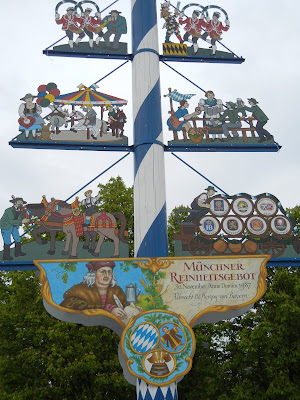Back in the day (way back, think 1400s), England found itself torn between two warring factions claiming rights to the throne: the House of Lancaster and the House of York. The conflict is known as the War of the Roses and lasted on and off from 1455 to 1485. I am certainly no expert on the subject, but I do know it played a significant role in the history of England. This political shakeup saw the following Kings reign during the period of the War of the Roses: Henry VI (Lancaster), Edward IV (York), Edward V (York), and Richard III (York). If you are really interested, you can research further because this history is full of changing alliances, family betrayals, fleeing to foreign countries, returns from abroad for revenge, bouts of insanity, impersonations: you know, the typical procedures of that time. The end of the conflict of the War of the Roses is generally considered when Henry Tudor (from the lineage of Lancaster) defeated Richard III and assumed the throne. He married Elizabeth of York (from the royal family of York), joining the two kingdoms. Henry Tudor is known as Henry VII, father of Henry VIII (the one we usually know because of his many wives and the creation of the Church of England).
Relics from the time still remain in Lancaster, where you can find red roses over the city. The red rose is the symbol of the House of Lancaster and the white rose is the symbol of the House of York. Being a transplant Lancastrian, I didn’t want to like York on principle. (I am a sucker for a good rivalry.)
But liked it I did. One of England’s most historic cities, York’s well preserved buildings and architecture give you the feeling that you are stepping back in time. York has impressive city walls from the medieval ages still intact. In fact, the history of York’s city walls goes even further back: the first walls were built by the Romans in the early ADs. You can climb the stairs to walk the circumference of the city along the top of the city walls. Everything within the walls represents the ‘old town’ part of York. From the walls, you can get a great view of the York Minster, the second largest Gothic cathedral in Northern Europe. I have seen many a church in Europe, and this is definitely one of the most impressive. We were lucky that the night we were spending in York was the day of the weekly Evensong Service. The Evensong Service allows guests and members to sit in the choir chamber of the cathedral. The choir leads you in music and song, and then there is a short homily. Another interesting thing was that a Spanish priest had been invited to give the homily at the Evensong. Afterward, my husband introduced himself to the priest and was satisfied that the priest could recognize his local Galician accent. (Spaniards are proud of their home regions.)
York is also regarded as one of the most haunted cities in England. Being the good tourists that we are, we joined a walking ghost tour of the city. I’m not much for these kinds of things, but the tour was actually light-hearted, entertaining, and informative. Our guide was quite the character, making plenty of jokes along the way. In addition to hearing some spooky stories, he always gave us some background about the different buildings in the city. It was good fun.
Another famous product of York is chocolate, the city becoming an industrial chocolate producing hub in the 19th century. Some of the famous brands are Terry’s and Rowntree’s (now owned by Nestlé). We Americans know Terry’s as the maker of the Chocolate Oranges that we eat at Christmas, and the Nestlé factory in York pumps out millions of our beloved Kit Kats. There were plenty of chocolate shops around York that tempted me. While walking the narrow Shambles, York’s oldest street with a long history of markets, we stopped at Monk Bar Chocolatiers. They were selling milk and dark chocolate shots: liquid chocolate in chocolate cups. Amazing. This is not to be missed!
We ended the day at the Museum Gardens, outside the Yorkshire Museum. There is a river that runs along the gardens with ruins of St. Mary’s Abbey, built in 1088. Lots of young families were there enjoying the space. York is a great place to visit in northern England and full of history!
 |
| York Minster, just a little bit impressive. |
 |
| York Minster for the Evensong Service. |
 |
| Rambling around The Shambles. |
 |
| The historic Shambles street is iconic for its buildings that lean in towards each other. |
 |
| Chocolate shots at Monk Bar Chocolatiers. |




























